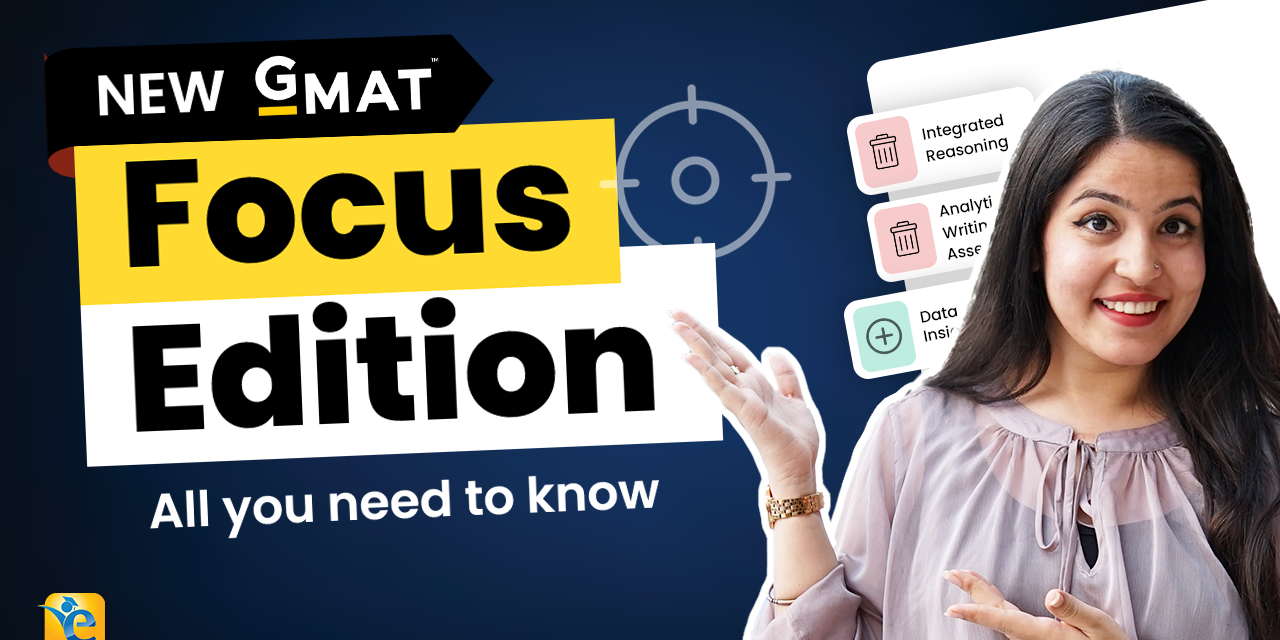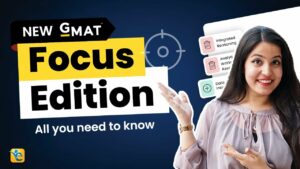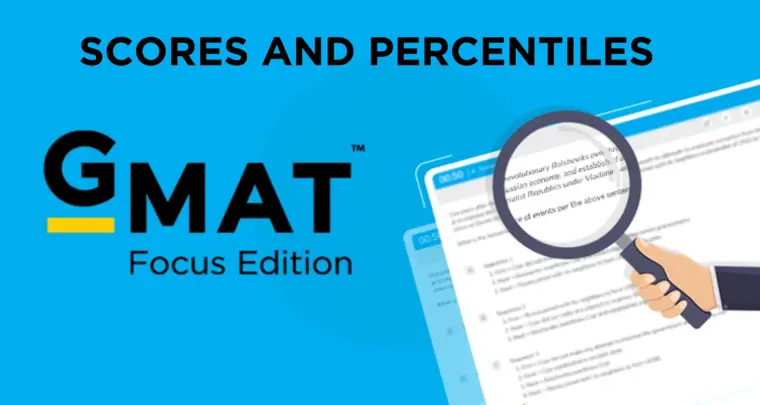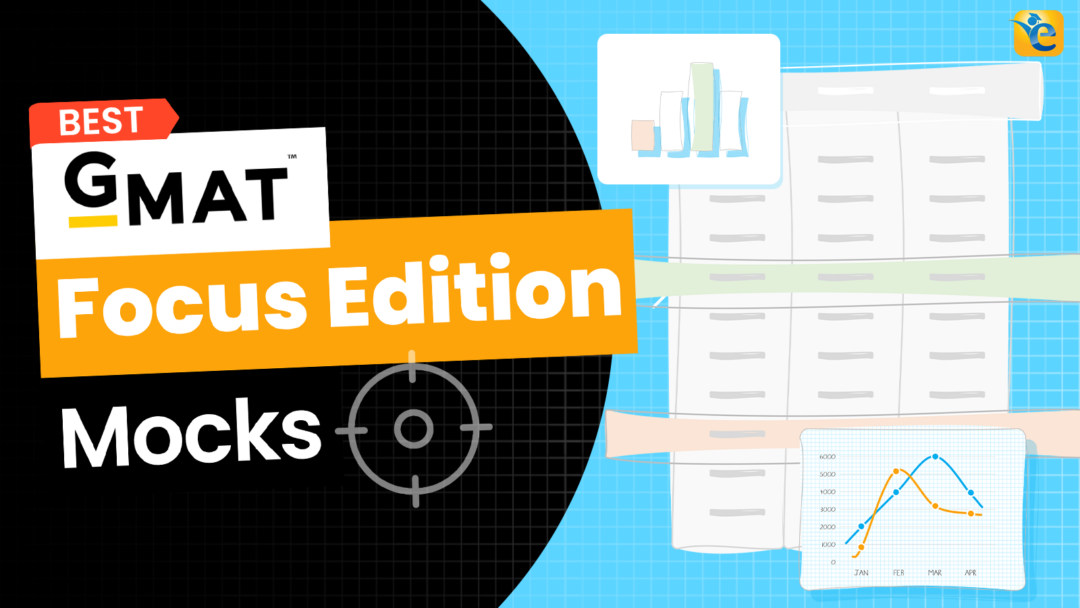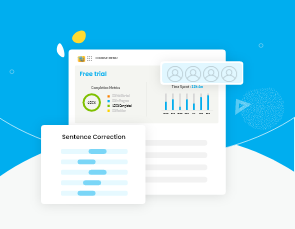As the business landscape evolves, so must the tools we use to navigate it. Recognizing this need for continual adaptation, the Graduate Management Admission Council (GMAC) has introduced a significant change to the Graduate Management Admission Test (GMAT). On November 7, 2023, GMAC launched the GMAT Focus Edition, a revamped version of the GMAT designed to better assess the skills required in today’s dynamic business environment.
Tell us about your GMAT preparation journey
Take our quick quiz to understand where you are in your GMAT journey
Whether you’re a first-time test-taker, transitioning from the classic GMAT, or retaking the exam to improve your score, this comprehensive guide explores everything about the new GMAT format and how it differs from the previous version.
Tailored Strategies for Every Test-Taker
For First-Time Test-Takers
New to the GMAT? The GMAT Focus Edition presents a streamlined new GMAT format that emphasizes critical reasoning, problem-solving, and data analysis—essential skills demanded by top MBA programs worldwide. Featuring just three targeted GMAT Focus sections (Quantitative Reasoning, Verbal Reasoning, and Data Insights) and a concise 2 hours and 15 minutes duration, it’s specifically engineered to minimize test fatigue while maintaining academic rigor.
For Transitioning Users
Already familiar with the classic GMAT? The GMAT Focus Edition introduces several significant enhancements to the traditional GMAT exam pattern, including the elimination of Sentence Correction and Geometry questions, a refined scoring scale (205–805), and the valuable ability to review and edit answers within each section.
For Retakers Aiming to Improve Scores
Retaking the GMAT Focus Edition offers distinctive opportunities to refine your approach and elevate your performance. With detailed analytical insights provided through the complimentary Official Score Report, you can precisely identify specific areas requiring improvement.
- Tailored Strategies for Every Test-Taker
- GMAT Exam Pattern: Key Changes in the Focus Edition
- GMAT Focus vs GMAT: A Comprehensive Comparison
- GMAT Focus Edition Syllabus: Exam Structure and Questions
- GMAT Focus Edition Study Plan: How to Prepare
- GMAT Preparation Time: How Long Should You Study?
- e-GMAT’s Comprehensive Offering for GMAT Focus Prep
- GMAT Focus Edition – FAQs
Watch this video to learn everything about the GMAT Focus Edition, how it differs from the old version of the GMAT, and how you can prepare for it.
Want to start GMAT Focus Preparation? Begin with our free mock test to see where you stand. Then, we’ll help you create a study plan tailored to your strengths and weaknesses. Click here to begin.
GMAT Exam Pattern: Key Changes in the Focus Edition
The GMAT Focus Edition brings several significant changes designed to better evaluate the skills needed in the modern business environment. Understanding these modifications to the GMAT exam pattern is crucial for effective preparation:
Three Sections instead of Four
The most significant change introduced in the new GMAT format relates to the content of the exam. The old GMAT featured four sections, which include Quantitative Reasoning, Verbal Reasoning, Analytical Writing Assessment (AWA), and Integrated Reasoning.
However, the GMAT Focus Edition brings a notable change in the exam structure by removing the AWA section altogether and by converting the heretofore independent Integrated Reasoning (IR) section into the Data Insights sections, the third section that now contributes to your 805 score. The Integrated Reasoning section was scored separately earlier on a scale of 1 to 8 and did not contribute to your 800 score.
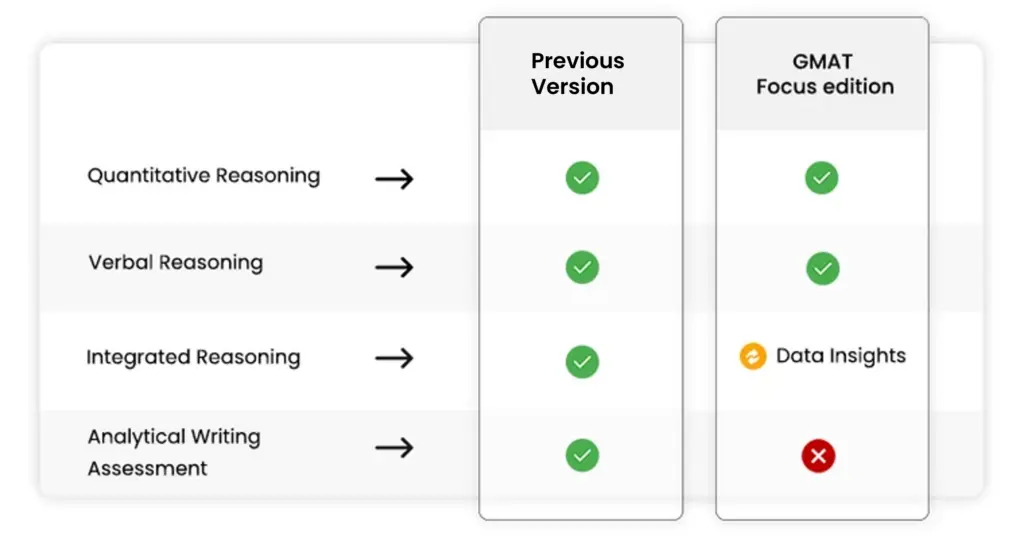
GMAT Focus Sections: New Data Insights Component
The GMAT Focus Edition introduces a cutting-edge Data Insights section as one of its three core GMAT Focus sections. This new segment is specifically designed to evaluate candidates’ competence in data analysis and interpretation, which is crucial in today’s rapidly changing business environment. By integrating both Integrated Reasoning and Data Sufficiency question types, this section measures a newly calibrated digital and data literacy dimension, which is one of the most relevant and in-demand skills in business today.
Consisting of 20 questions, this section prompts you to evaluate the relationship between various sources and types of information, such as graphics, numbers, and language, in order to arrive at informed decisions. Some of these questions may involve mathematical computations, data analysis, verbal reasoning, or a combination of all three. To assist you in your task, an on-screen calculator is available only in this section.
Data insights in the GMAT Focus Edition is more discerning than IR in the old GMAT for two reasons. First, it is 45 minutes long, 50% longer than the 30-minute IR section, allowing for a deeper evaluation of candidates’ data literacy skills. Second, the Data Insights section is now on par with the Quantitative and Verbal sections, all scored on a scale of 60 to 90, emphasizing the importance of data literacy in the modern business world.
You can find a further breakdown of this new Data Insights section here!
Start your GMAT Focus journey with our free GMAT Focus mock test to gauge your baseline score, and then create a personalized study plan. Dive into our free trial for targeted prep. Trusted by thousands with 2800+ reviews on GMAT Club, e-GMAT is your partner in mastering the GMAT. Contact us at support@e-gmat.com for expert guidance.
How Long is the GMAT Focus: Shorter Test Duration
The GMAT Focus Edition is significantly shorter than the old GMAT, with a total test time of 2 hours and 15 minutes compared to 3 hours and 7 minutes in the old version. This is because the new exam consists of three 45-minute sections, including Quantitative Reasoning, Verbal Reasoning, and Data Insights. With the removal of the Analytical Writing Assessment (AWA) section and the shortening of the Quant and Verbal sections, the total test time has been reduced by almost an hour, making it more efficient and less time-consuming for candidates.
The shorter test duration also helps reduce test-taking fatigue, allowing candidates to perform at their best throughout the exam.
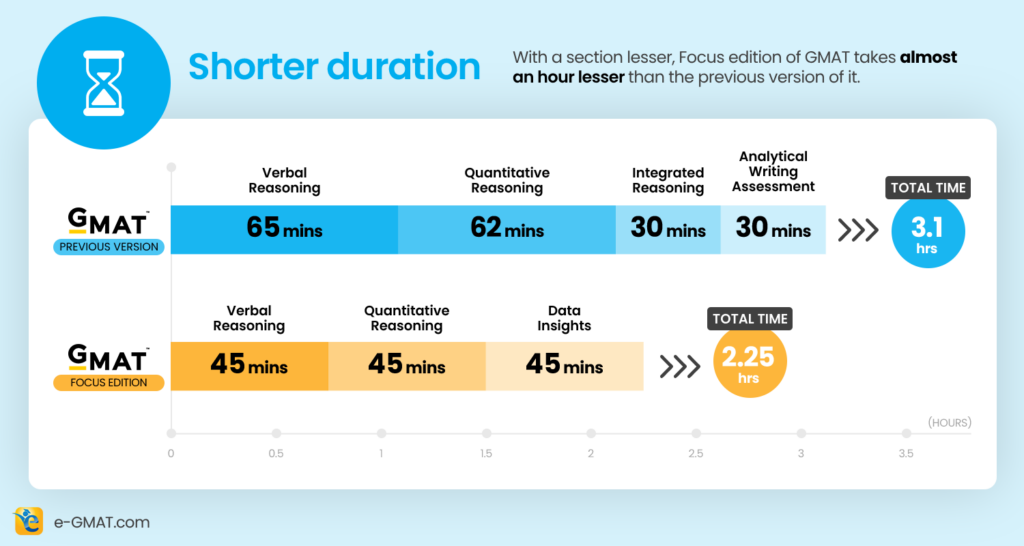
GMAT Focus Edition Scoring System
The updated GMAT Focus Edition scoring system range is 205 to 805. The total score is now derived from three sections: Quantitative (Q), Verbal (V), and Data Insights (DI), each scored on a scale from 60 to 90 in 1-point increments. This new format places a greater emphasis on data analysis skills, reflecting their importance in the modern business world. Previously, the overall GMAT score was based only on the Quantitative and Verbal sections. With the GMAT Focus Edition, you will receive individual section scores for each part, providing a more detailed evaluation of your abilities.
Read our article GMAT Focus Edition- Score Chart and Percentiles to know more about updated scoring system.
Review and Edit Options
Earlier, the GMAT didn’t allow candidates to go back and review or change the answers to questions once attempted. However, the GMAT Focus Edition allows you to bookmark and review as many questions as you want. You can also change up to a maximum of three answers per section within the section time remaining. According to the GMAC, this feature allows candidates to optimize their test strategy.
Enhanced Official Score Report
Previously, candidates had to purchase an ESR for $30 extra to get detailed performance insights. The GMAT Focus Edition now includes an enhanced Official Score Report, providing detailed insights into your strengths, focus areas, performance in each section, question types, and time management skills. This report functions like an ESR, helping you better assess your abilities.
Moreover, you can now select programs to send your scores to after the exam, whether you test online or at a test center. You can send up to five score reports for free within 48 hours of receiving your Official Score. Additional score reports are available for a fee.
Content Changes in the Quantitative and Verbal Reasoning
Here are the major changes in the quant and verbal sections of the new GMAT format:
| What Changed? | Why This Change? | What It Means for Test-Takers |
| Sentence Correction questions removed (Verbal Reasoning section) | Reflects a strategic shift from grammatical accuracy to higher-order reasoning skills such as Critical Reasoning and Reading Comprehension. These analytical abilities more closely align with actual MBA coursework demands and professional communication requirements. | ✔ Test-takers no longer need to memorize complex grammar rules ✔ More focused preparation on analytical reasoning and argument evaluation ✔ Reduced overall preparation burden while emphasizing skills with greater real-world application |
| Geometry questions eliminated (Quantitative Reasoning section) | Narrows the Quantitative Reasoning focus to arithmetic and algebra, which research indicates are more directly relevant to real-world business scenarios and decision-making processes. | ✔ No need to study geometric concepts, formulas, or spatial reasoning ✔ Concentrated preparation on practical quantitative problem-solving ✔ More efficient study time allocation toward business-relevant mathematical skills |
This restructuring represents GMAC’s response to evolving business school priorities, emphasizing practical reasoning and analytical skills over technical knowledge that can be readily accessed in professional environments.
The best way to understand the GMAT exam format is by trying the test out for yourself. Try Free GMAT Mock now.
We have provided a clear and concise comparison of GMAT Focus Mocks and explained the mocks algorithm.
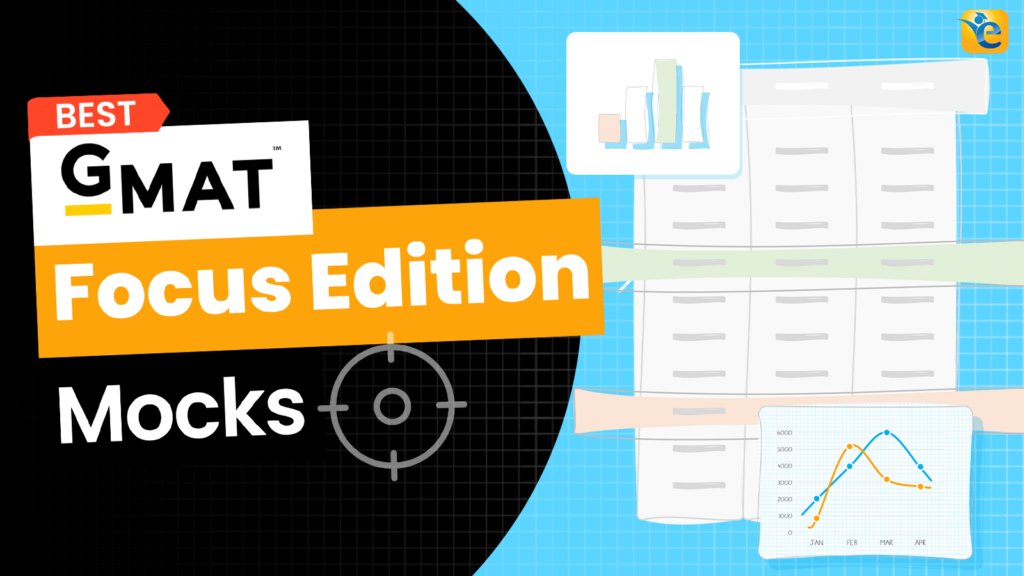
GMAT Focus vs GMAT: A Comprehensive Comparison
Understanding the key differences between the GMAT Focus Edition and the classic GMAT is essential for test-takers transitioning between versions. Here is a detailed GMAT Focus vs GMAT comparison:
| Feature | The GMAT Focus Edition | The Old GMAT exam |
| Exam duration | 2 hours 15 minutes | 3 hours 7 minutes |
| Sections | Quantitative reasoning, Verbal reasoning, Data insights | Quantitative reasoning, Verbal reasoning, Integrated Reasoning, Analytical writing assessment |
| Question type | All multiple-choice questions | Multiple choice questions + One essay |
| No. of Questions | Verbal – 23 Quant – 21 Data Insights – 20 | Verbal – 36 Quant – 31 IR – 12 AWA – 1 |
| Exam Cost | $275 | $275 |
| Individual section duration | 3 sections of 45 minutes each | Quantitative reasoning- 62 minutes; Verbal reasoning- 65 minutes; IR- 30 minutes; AWA- 30 minutes |
| Section order | Any order possible | Order 1- AWA and IR> Quant> Verbal; Order 2- Verbal> Quant> IR and AWA; Order 3- Quant> Verbal> IR and AWA |
| Flexibility | Bookmark and review as many questions as possible; Change up to 3 answers per section | No option to bookmark, edit or review questions |
| Score sending | Send scores to 5 schools for free after knowing your score in both the online and test center exam | Select five schools to send the score for free before starting the exam |
| Performance insights | Improved official score report with detailed insights into your performance | You can get insights into your performance by purchasing the ESR at an additional cost of $30 |
| Attempts | Five (5) GMAT exam attempts during a rolling 12-month period and eight (8) total lifetime attempts | Five (5) GMAT exam attempts during a rolling 12-month period and eight (8) total lifetime attempts |
Begin your GMAT preparation with the only prep company that has delivered more 700+ scores than any other GMAT club partner. Achieve GMAT 705+ with our AI driven tools that give you personalized feedback at every step of your GMAT journey. Take our free trial today!
GMAT Focus Edition Syllabus: Exam Structure and Questions
The GMAT Focus Edition syllabus has a total of 64 questions. The test comprises three sections, including 21 questions in the Quantitative Reasoning section, 23 questions in the Verbal Reasoning section, and 20 questions in the newly introduced Data Insights section.
Below is a detailed breakdown of each section and scoring mechanics:
1. Quantitative Reasoning: Algebra and Arithmetic
Format: 21 Problem-Solving questions | 45 minutes | ≤2 minutes per question
Content Focus:
- Algebra: Linear equations, quadratic equations, functions, inequalities, algebraic expressions
- Arithmetic: Ratios, percentages, integers, exponents, roots, statistical interpretation (mean, median, standard deviation)
Key Strategies:
- Master time management: Allocate ≤2 minutes per question
- Use elimination techniques for variables-heavy problems
2. Verbal Reasoning: Critical Reasoning and Reading Comprehension
Format: Critical Reasoning (40-50%) and Reading Comprehension (50-60%)
Critical Reasoning:
- Tests ability to analyze, evaluate, and strengthen/weaken arguments
Question Types:
- Assumption Identification: “What must be true for this conclusion to hold?”
- Inference-Based: “What can be logically deduced from the passage?”
- Paradox Resolution: “Explain the discrepancy in the data provided.”
Reading Comprehension:
- Passages span 200-350 words covering economics, science, and social sciences
Question Types:
- Main Idea: Identify the primary purpose of the passage
- Detail-Oriented: Extract specific information
- Inference: Draw conclusions not explicitly stated
Key Strategies:
- For Critical Reasoning: Focus on identifying premises and conclusions
- For Reading Comprehension: Practice skimming techniques to locate key details efficiently
3. Data Insights
Question Types:
- Data Sufficiency: Assesses your ability to analyze a quantitative problem and determine when you have enough data to solve it.
- Multi-Source Reasoning: Evaluates your ability to analyze data from different sources and recognize discrepancies or draw inferences about which data is relevant.
- Table Analysis: Measures your ability to analyze and sort data from a table.
- Graphics Interpretation: Evaluates your ability to interpret graphical data to make inferences and discern relationships.
- Two-Part Analysis: Measures your ability to solve complex problems using quantitative or verbal reasoning.
Tools Available:
- On-screen calculator (use sparingly to save time)
Key Strategies:
- Prioritize accuracy over speed in multi-step problems
- Practice synthesizing data across formats using GMAC’s official practice tools
Read Our Comprehensive Article on GMAT Focus Edition Syllabus 2024.
GMAT Focus Edition Study Plan: How to Prepare
According to the GMAC, the new GMAT Focus Edition enables students to prepare faster due to its leaner format. With the removal of the Analytical Writing Assessment, Sentence Correction in Verbal, and Geometry in Quant, the exam has less content to cover. However, the primary goal of the GMAT remains unchanged: to assess a candidate’s readiness for business school. Despite the reduced content, the GMAT Focus Edition is still a rigorous exam requiring candidates to demonstrate mastery of the material.
Preparation Steps:
- Start with a Diagnostic Mock: Measure your starting ability by taking a diagnostic mock exam. You can write the first free Sigma-X mock on the e-GMAT platform or a free Official Mock on mba.com.
- Create a Study Plan: Create a study plan to map out your GMAT preparation journey in detail. A reliable tool, such as e-GMAT’s Personalized Study Planner, will help you set a clear path to achieving your target score.
- Execute Your Plan: Follow a structured approach to learning. Master one section at a time, by applying these three stages of learning to each sub-section, one by one.
- Stage 1 – Learn Concepts and Process Skills: Focus on understanding the foundational concepts and skills for each section.
- Stage 2 – Master the Application of Skills: Cement your knowledge by practicing application through targeted Cementing Quizzes in a timed environment.
- Stage 3 – Get Test Ready: Build your mental agility, testing stamina, and temperament by solving mixed and lengthy quizzes, preparing you for full-length exams.
- Write Mocks to Gauge Test Readiness: Take a handful of full-length mock exams to fine-tune your performance and assess your readiness for the actual test.
- Write the GMAT: Once you feel prepared, schedule and take the GMAT Focus Edition with confidence.
Read this article to understand How to create a Study plan for the GMAT Focus Edition.
Section-Specific Strategies
Verbal:
- Master the fundamentals: Build core skills in grammar rules, logical reasoning structures, and reading comprehension techniques before attempting practice questions.
- Develop pre-thinking habits: For critical reasoning, formulate your own answer before looking at options to avoid being misled by attractive wrong choices.
- Practice active reading: In reading comprehension, actively engage with the passage and identify the author’s purpose and tone.
- Implement error logs: For every practice question, articulate why each answer choice is correct or incorrect. This approach helps you master verbal reasoning concepts and avoid falling for traps on test day.
- Use timed practice strategically: Start with untimed practice to build accuracy, then gradually introduce time constraints until you can maintain both speed and precision.
Quant:
- Master core topics: arithmetic, algebra, exponents, percents, rates, probability, combinatorics, ratios, and number properties
- Efficiency: Learn to identify the simplest solution path rather than defaulting to complex calculations. Develop flexibility by practicing multiple solution methods for the same problems. Master strategic shortcuts appropriate for different question types.
- Use logic to eliminate answer choices and simplify problems before performing calculations
- Learn to recognize and avoid common pitfalls and traps set by test makers
Data Insights:
Data Sufficiency:
- Focus on determining whether information is sufficient rather than solving the complete problem
- Learn to identify common traps like redundant data or irrelevant information
- Develop a logical approach to evaluate information sufficiency efficiently
Graphics Interpretation:
- Quickly analyze various visual representations (scatterplots, bar graphs, etc.) to identify trends, correlations, and anomalies
- Practice distinguishing between percentage and absolute values
Table Analysis:
- Master sorting and filtering techniques to efficiently extract relevant information from tables
- Focus on understanding relationships within the data rather than memorizing formulas
Two-Part Analysis: Develop proficiency in both numerical reasoning and verbal logic, as questions can involve either domain
Multi-Source Reasoning:
- Build skills to simultaneously analyze multiple data sources (graphs, text, tables)
- Focus on identifying relevant data while ignoring distractions.
You can also read about GMAT focus Syllabus, Study plan , Scoring system , Test dates, Focus Mocks and Official guide.
Access all the GMAT Focus articles here.
GMAT Preparation Time: How Long Should You Study?
Understanding how much GMAT preparation time you’ll need is crucial for planning your study journey. Most successful GMAT Focus Edition test-takers dedicate between 2-4 months of focused preparation. However, the ideal GMAT preparation time varies based on your starting point, target score, and available study hours per week. For those targeting scores above the 80th percentile, a minimum of 100-120 hours of dedicated study is typically necessary.
Several factors affect your required GMAT preparation time:
- Starting proficiency level: Candidates beginning with stronger foundations in quantitative and verbal skills may require less preparation time.
- Target score: Higher score goals generally demand more extensive preparation.
- Available study hours: Consistent daily practice yields better results than cramming.
- Learning style: Some test-takers master concepts quickly, while others benefit from more repetition.
The streamlined format of the GMAT Focus Edition may reduce preparation time slightly compared to the classic GMAT, but mastering the core concepts and developing effective test-taking strategies still requires consistent effort.
e-GMAT’s Comprehensive Offering for GMAT Focus Prep
e-GMAT is committed to helping you achieve your target GMAT Focus Score. Here’s a brief overview of some of our offerings:
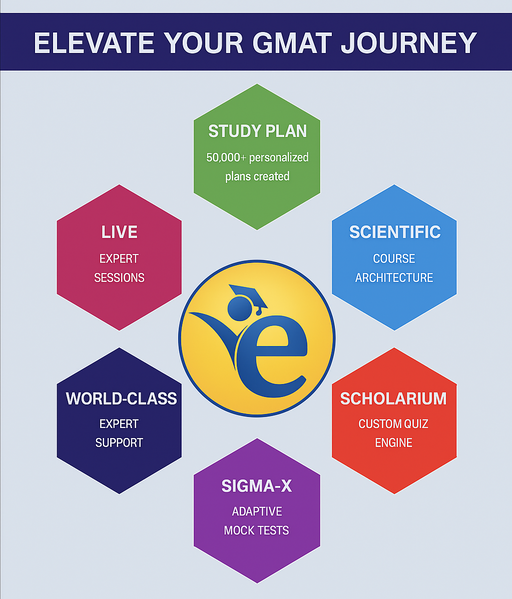
- Study Plan
- Over 50,000 personalized study plans have been created using our Personalized Study Planner tool, ensuring a tailored approach to GMAT preparation.
- Comprehensive and Scientific Course Architecture
- Our course is structured around foundation concepts, core concepts, and application files to transform concepts into skills. Learning concepts is only half the battle; successfully applying them to full-length questions is key to acing the GMAT.
- Custom Quiz Engine
- Scholaranium, our custom quiz engine, allows you to create cementing and test readiness quizzes, target your weaknesses, decide which questions to practice and revise, and simulate various performance scenarios. If you can think of a quiz type, you can create it with Scholaranium.
- Sigma-X Mock Tests
- With a scoring engine similar to the real GMAT and ESR+ analysis, Sigma-X mocks will super-charge your journey towards a 735 score, providing direction for that next 50-point improvement. These mocks are designed to be fully adaptive, mirroring the actual exam’s structure, to offer a realistic practice experience.
- World-Class Support
- Our team of GMAT Success Strategy and Subject Matter Experts are just an email (support@e-gmat.com) away. They can help you craft a personalized study plan, explain solutions, push past score plateaus, analyze mock performances, and create hyper-specific improvement plans to achieve your target score.
- Live Sessions
- Attend 15 high-value live sessions conducted by our experts. Master high-value topics, participate in workshops, build Last Mile plans, and address common issues such as timing struggles and inconsistent performance. With unlimited access and new batches starting every two weeks, attend sessions when you’re ready, not when you’re forced to.
If you have started preparing for the GMAT Focus or are planning to, we can help you with a personalized study plan and give you access to quality online content to prepare. Write to us at acethegmat@e-gmat.com. We are the most reviewed GMAT prep company on gmatclub with 2800+ reviews. Why don’t you take a free trial and judge for yourself?
GMAT Focus Edition – FAQs
Here are some frequently asked questions on GMAT Focus Edition 2025.
The duration of the GMAT Focus Edition is 2 hours and 15 minutes.
There are three sections in the GMAT Focus Edition – Quantitative Reasoning, Verbal Reasoning, and Data Insights.
Yes, Sentence correction section has been removed from Verbal Reasoning and Geometry has been removed from Quantitative Reasoning.
The New GMAT Focus Edition gives you one single total score based on three sections (Quantitative Reasoning, Verbal Reasoning, and Data Insights), unlike the old GMAT Exam, which gave three different scores (The total score, AWA score, and IR score) Read this article – GMAT Focus Edition- Score Chart and Percentiles
Reading Comprehension, Critical Reasoning, and Problem-Solving in Quant retained in the NEW GMAT Exam Format.
Yes, any GMAT score will be valid for 5 years from the test date. The business school will not stop accepting your old GMAT score once the GMAT focus edition is introduced.
Yes, GMAT Focus is adaptive, adjusting the difficulty based on your responses. However, uniquely, it allows you to change up to three answers in each section to reduce exam stress and promote decisive decision-making.
Registration for the GMAT Focus Edition is now open. (Started on August 29, 2023) – Registration link
Read Our Comprehensive Article on GMAT Focus Edition Syllabus 2024.
All GMAT exam attempts across all versions of the exam, taken online or at a test center, will count towards your five (5) GMAT exam attempts during a rolling 12-month period and eight (8) total lifetime limits.
GMAT focus Edition started on November 7, 2023. The previous version of the GMAT Exam was discontinued after January 31, 2024. Starting from February 1, 2024, the only version of GMAT available is the GMAT Focus Edition.
The GMAT Focus Edition isn’t inherently harder but differs in structure and focus. It emphasizes analytical skills like data interpretation and critical reasoning while removing Sentence Correction and AWA. Its shorter duration (2 hours 15 minutes) may reduce fatigue but requires sharper time management.
Most successful candidates spend 2-4 months studying for the GMAT Focus Edition, dedicating approximately 100-120 hours of preparation for competitive scores. Your specific timeline depends on your starting level, target score, and available study time per week.
A good GMAT Focus Edition score depends on your target business schools. The scoring scale ranges from 205 to 805. Generally, scores above 650 (approximately 70th percentile) are considered competitive for most business programs, while top-tier MBA programs typically look for scores of 700+ (80th percentile and above). Each section (Quantitative, Verbal, and Data Insights) is scored from 60-90, with balanced performance across all three sections being important for a strong application. Research your target schools’ median GMAT scores to set an appropriate goal for your preparation.


